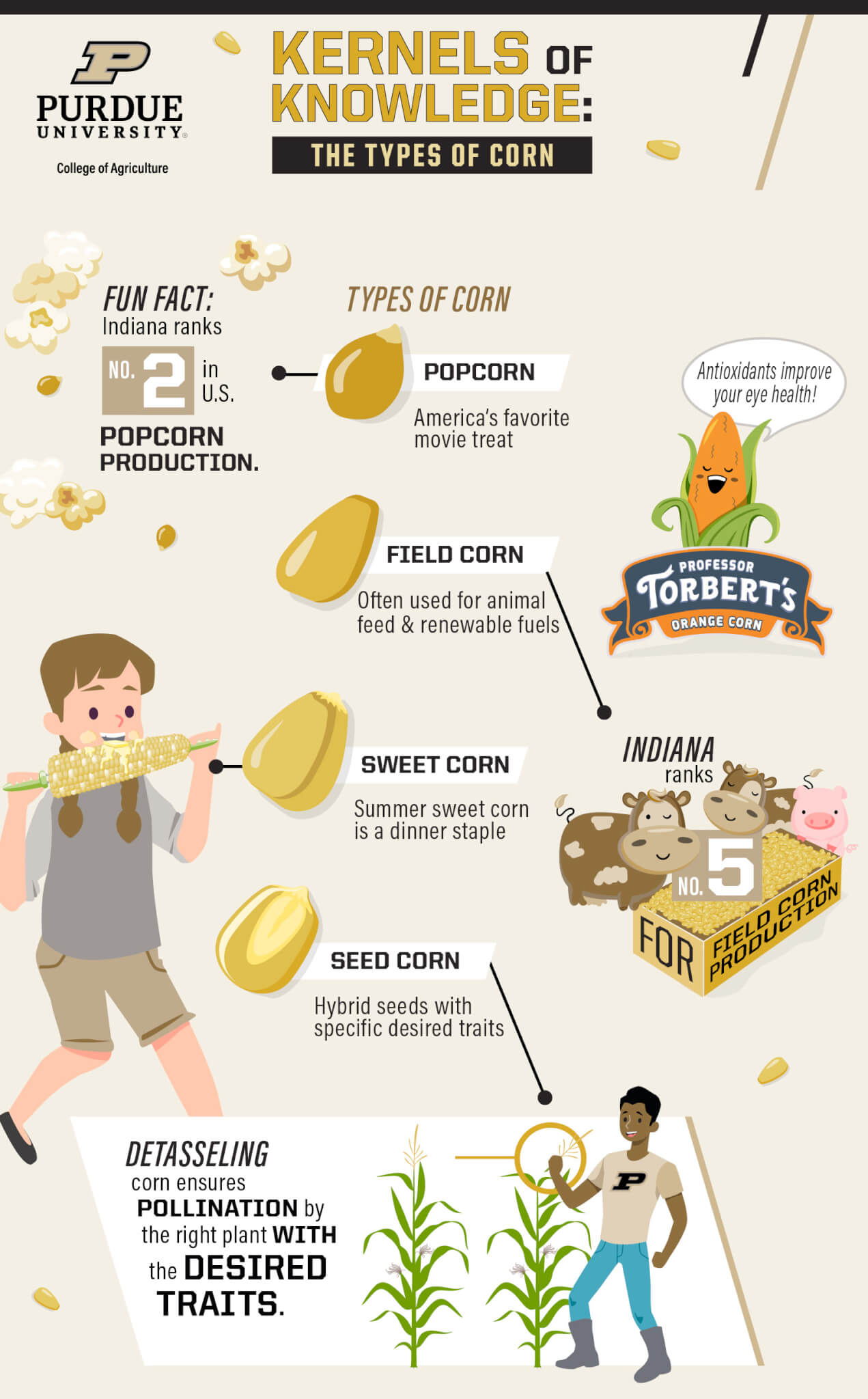Kernels of Knowledge: Corn, a family full of variety
Agriculture is a vital component of Indiana’s history, culture and future. Discover the development of corn and Purdue University’s contributions to its growth with Purdue Agriculture’s short series, Kernels of Knowledge.
 If you’re driving in Indiana, one thing is certain in three out of four seasons: you’re going to see a lot of corn! That’s no real surprise, since Indiana ranks second in the U.S. for popcorn production and fifth for field corn production. But, as you’re looking at them, have you ever wondered why some fields of corn are taller than others? Or why people or machines remove corn tassels from some plants but not others?
If you’re driving in Indiana, one thing is certain in three out of four seasons: you’re going to see a lot of corn! That’s no real surprise, since Indiana ranks second in the U.S. for popcorn production and fifth for field corn production. But, as you’re looking at them, have you ever wondered why some fields of corn are taller than others? Or why people or machines remove corn tassels from some plants but not others?Read on for answers to those questions and learn about visible traits to help you identify the different types of corn grown in Indiana, with help from Dan Quinn, assistant professor of agronomy and Purdue Extension corn specialist.
One way to recognize popcorn in the field: popcorn tassels are often much larger and droopier than the tassels of field corn. Thanks in part to one of our most famous alumni, Orville Redenbacher, Purdue Agriculture has long been associated with popcorn. Here’s how it works: popcorn kernels are dried to a specific moisture content, then pop and turn inside out as they’re heated and the moisture turns into steam.
Research in the college has been essential to the development of this snack. Bruce Ashman, professor emeritus of botany and plant pathology, built a world-class popcorn genetics program that produced seeds optimal for popping, and Ag Alumni Seed, a Purdue affiliate, is one of the leading global vendors of hybrid popcorn seeds.
Seed corn produces hybrid seeds with specific desired traits that will be used in a future growing season. In the field, seed corn is grown in blocks of female rows with a male row. It’s typically most noticeable during the pollination period, when tassels from the female plants are removed by hand or machine to ensure only the pollen from the male plants is used to pollinate the female plants.
Sweet corn is a summertime favorite! It’s a noticeably shorter and smaller plant than other types of corn, with leaves that aren’t as thick or upright. Unlike other types of corn harvested in the fall, sweet corn is picked in summer when the flavor is just right.
Field corn (sometimes called dent corn) is the most common corn you see when driving through Indiana — what most would think of as a “normal” cornfield in the Midwest. Dent corn can reach heights of approximately 10 feet and is harvested in the fall when the kernels are dry. It’s frequently used for animal feed or renewable fuel production as well as for products like corn meal, corn flour or grits, where Purdue innovation has improved its nutritional value.
Torbert Rocheford, the Patterson Endowed Chair in Translational Genomics for Crop Improvement in the Department of Agronomy, identified gene variations that, when selected during breeding, replace nutritionally poor white corn with biofortified orange corn with high levels of antioxidant pigments called carotenoids. The body can convert some of these carotenoids (also found in foods like carrots and sweet potatoes) into vitamin A, promoting eye health and supporting the immune system. Originally developed to help improve nutrition in developing countries, the Purdue-affiliated startup company, NutraMaize, is now bringing the benefits of orange corn to Americans. Professor Torbert’s Orange Corn meal, flour and grits are available online.
Tune in next week to learn where Indiana corn is used!
